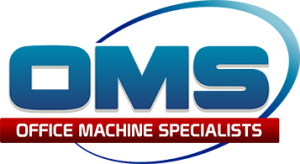
When it comes to office equipment, the choice between digital copiers and analog copiers, also known as photocopiers, can significantly impact your workflow and efficiency. Understanding the differences between these two technologies is crucial for making an informed decision that aligns with your business needs. Digital copiers offer advanced features like scanning, emailing, and cloud integration, enhancing productivity and accessibility. On the other hand, analog copiers are known for their reliability and simplicity, making them a cost-effective option for basic printing needs. By comparing the benefits and limitations of each type, you can determine which option best suits your requirements and budget.
How Digital Copiers Work
Scanning Process
Digital copiers utilize a scanning process to convert physical documents into digital format. The document is scanned by a light-sensitive sensor, which captures the content as a digital image. This image is then processed and stored in the copier’s internal memory for further manipulation.
Laser Technology And Internal Memory
Lasers play a crucial role in digital copiers by creating an electrostatic image of the document on a rotating drum. This image is then transferred onto paper through a combination of heat and pressure, resulting in a high-quality copy. The internal memory of digital copiers stores data temporarily, allowing for quick retrieval and processing of documents.
Software Enhancement
The software integrated into digital copiers enhances functionality and user experience significantly. It enables features like automatic resizing, rotation, and sorting of documents. Advanced software can facilitate document management tasks such as scanning to email or cloud storage directly from the copier.
How Analog Copiers Work
Mirrors Projection
An analog copier utilizes a system of mirrors to reflect light onto the document being copied. This light then projects the image onto a rotating drum.
The mirrors within the analog copier work in unison to capture the content of the original document and accurately reflect it onto the drum. This process forms the basis of how analog copiers reproduce documents.
Image Quality Limitations
Analog copiers are limited in terms of image quality due to their reliance on mirrors and lenses for projection. The analog technology lacks the precision and clarity offered by digital copiers.
The image quality produced by analog copiers may suffer from issues such as blurriness or distortion, especially when copying detailed or intricate documents. This limitation is a significant drawback compared to digital copiers’ crisp and accurate reproductions.
Step-By-Step Process
- Document Placement: To initiate the copying process, the original document is placed face down on the glass surface of the analog copier.
- Mirror Reflection: The mirrors inside the copier capture the content of the document and reflect it onto the rotating drum.
- Drum Transfer: The image projected onto the drum receives an electrostatic charge, attracting toner particles that form a replica of the document.
- Paper Feed: As the drum rotates, a blank sheet of paper is fed through the machine.
- Image Transfer: The toner image on the drum is transferred onto the paper through a combination of heat and pressure.
- Final Output: The paper emerges from the analog copier with a duplicate of the original document printed on it.
Benefits Of Digital Copiers
Multifunctionality
Digital copiers offer versatility by combining various functions such as printing, scanning, and faxing in one device. This feature streamlines office operations efficiently.
Digital photocopiers can produce high-quality digital copies that are crisp and clear, ensuring professional-looking documents for all your business needs.
Compact Design
One of the significant advantages of digital copiers is their compact design, making them ideal for various office sizes and home environments. Their space-saving nature allows for easy placement in any setting.
The sleek and modern design of digital printers enhances the overall aesthetics of the office environment while providing efficient functionality.
Reduced Maintenance Needs
Compared to analog copiers, digital copiers have reduced maintenance needs, saving time and money on servicing and repairs. This benefit contributes to increased productivity in the workplace.
Digital printers require less frequent servicing due to their advanced technology, resulting in minimal downtime and continuous workflow.
Quality And Efficiency
Print Clarity
Digital copiers offer exceptional print clarity, surpassing analog copiers in producing sharp and detailed documents. The advanced technology embedded in digital copiers ensures that every document is reproduced with utmost precision.
Analog copiers, on the other hand, may struggle to match the crispness and accuracy of digital copies. The difference in print quality between digital and analog copiers is significant, with digital copiers consistently delivering superior results.
Workflow Streamlining
Digital copiers are equipped with integrated features that streamline workflows efficiently. These features include automatic document feeders, duplex printing capabilities, and cloud connectivity. By automating various processes, digital copiers enhance productivity and simplify complex tasks.
Analog copiers lack these integrated features, often requiring manual intervention for tasks such as double-sided printing or scanning multiple pages. This manual process not only consumes time but also increases the likelihood of errors in the final output.
Speed Of Production
Digital copiers excel in speed when it comes to producing multiple copies swiftly. With high-speed processors and ample memory capacity, digital copiers can generate numerous copies within minutes, making them ideal for high-volume printing environments.
Analog copiers operate at a slower pace compared to their digital counterparts. The mechanical nature of analog copiers limits their speed and efficiency, resulting in longer wait times for multiple copies to be produced.
Cost Comparison
Initial Investment
When considering costs, digital copiers typically have a higher initial investment compared to analog copiers. This is due to the advanced technology and features integrated into digital copiers, which often come at a premium price point. On the other hand, analog copiers are generally more affordable upfront, making them an attractive option for businesses with budget constraints.
Long-Term Savings
Despite the higher initial cost of digital copiers, they often result in significant long-term savings. Digital copiers are known for their efficiency and productivity, leading to reduced operational costs over time. With features like automatic document feeders, duplex printing, and cloud integration, digital copiers streamline workflows and minimize paper waste, ultimately saving both money and time.
Cost Per Page
One crucial factor to consider when comparing digital and analog copiers is the cost per page. Digital copiers tend to have a lower cost per page than analog copiers. This is primarily due to the precise toner application and advanced printing technologies used in digital copiers, resulting in higher quality prints at a lower cost. Businesses that require frequent printing or copying will benefit from the lower cost per page offered by digital copiers.
Maintenance Costs
When it comes to maintenance, digital copiers often have lower long-term maintenance costs compared to analog copiers. Analog copiers require regular servicing and replacement of parts like drums and developer units, which can add up over time. In contrast, digital copiers have fewer moving parts and are less prone to mechanical issues, reducing the overall maintenance expenses for businesses.
Environmental Impact
Digital copiers not only offer cost savings but also contribute to a greener workplace. By enabling features like electronic document storage, remote printing, and energy-saving modes, digital copiers help businesses reduce their carbon footprint and minimize paper usage. This eco-friendly approach aligns with modern sustainability practices and can enhance the look of a business in the eyes of environmentally conscious customers.
Environmental Impact
Energy Efficiency
Digital copiers consume less energy compared to analog copiers, contributing to a reduced environmental impact. They are often ENERGY STAR certified, ensuring they meet strict energy efficiency guidelines. This certification signifies that digital copiers consume less power during operation, helping to lower electricity usage.
Waste Reduction
Digital copiers play a significant role in reducing waste due to their smaller production sizes and the use of recycled materials. Unlike analog copiers that rely heavily on plastic components, digital copiers incorporate recycled materials in their construction. This shift towards sustainable practices minimizes the production of harmful waste and decreases the environmental footprint of these devices.
Sleep Mode Features
One notable feature of digital copiers is their sleep mode functionality, which aids in conserving power when the device is not in use. By automatically entering sleep mode after a period of inactivity, digital copiers can significantly reduce energy consumption. This feature is beneficial for offices where copiers may remain idle for extended periods, promoting energy efficiency and reducing overall environmental impact.
Choosing The Right Copier
Factors To Consider
When selecting between digital copiers and analog copiers, it’s crucial to assess several key factors. Firstly, volume is a significant consideration. Determine the average number of copies you need to make daily to ensure the copier can handle your workload efficiently. Consider your budget constraints as digital copiers generally come with a higher upfront cost compared to analog copiers. Lastly, evaluate the available space in your office to accommodate the copier comfortably.
Specific Needs Assessment
To make an informed decision, evaluate your specific requirements. If color printing is essential for your business operations, opt for a copier that offers this feature. Similarly, if efficient document handling is a priority, look for copiers with advanced scanning and collating capabilities. Assessing these needs will help you choose a copier that aligns with your workflow seamlessly.
Researching Brands And Models
Before making a copier purchase decision, conduct thorough research on different copier vendors, brands, and models available in the market. Utilize user reviews to gain insights into the performance and reliability of various copiers. Look for brands known for their durability and customer support to ensure you invest in a high-quality copier that meets your requirements effectively.
Future Trends In Copier Technology
AI Advancements
AI advancements are revolutionizing copier technology, enabling smarter copying solutions. In the near future, copiers will be equipped with machine learning capabilities to enhance efficiency and productivity. These intelligent copiers will automatically adjust settings based on usage patterns, reducing manual intervention.
Increased Connectivity
Enhanced connectivity is a key focus in modern copier technology. Future copiers will offer seamless integration with various devices, allowing users to print from anywhere within the office network. Cloud integration will become more prevalent, enabling users to access and print documents remotely.
Sustainability In Manufacturing
The copier industry is shifting towards sustainability in both manufacturing and operation. Manufacturers are adopting eco-friendly practices to reduce waste and energy consumption. Copiers with lower power consumption and recyclable components are becoming increasingly popular in the market.
Closing Thoughts
In weighing digital copiers against analog ones, you’ve seen the clear advantages digital technology brings. From superior quality and efficiency to a more eco-friendly footprint, the benefits are evident. As you consider your copier needs, remember to factor in not just the upfront costs but also the long-term savings and environmental impact. The future of copier technology is evolving rapidly, so staying informed will ensure you make the best choice for your business needs.
Transform Your Office With The Best Digital Copiers In Concord, California!
Searching for a reliable digital copier near Concord, California? Look no further! At Office Machine Specialists, we’ve been the go-to experts in servicing and selling top-notch office equipment since 1995. As a trusted family-run business, we’re committed to providing you with the best equipment options and exceptional after-sales service.
With decades of experience, we know that choosing the right copier can be overwhelming. That’s where we come in. Our knowledgeable team will ask the right questions, understand your unique requirements, and guide you toward making smart decisions for your business. Whether you’re looking for a new machine lease or a purchase, we’ve got you covered.
We’ve witnessed the evolution of copiers from the pre-internet era to the cutting-edge digital workflow environment. Our expertise spans from efficient digital printing to seamless scanning, advanced account control, and fleet management. Our extensive experience with all the major brands makes us the invaluable resource your organization needs.
Don’t settle for anything less than the best. Contact Office Machine Specialists today for all your digital copier needs. Let us help you streamline your office operations and take your productivity to new heights!
